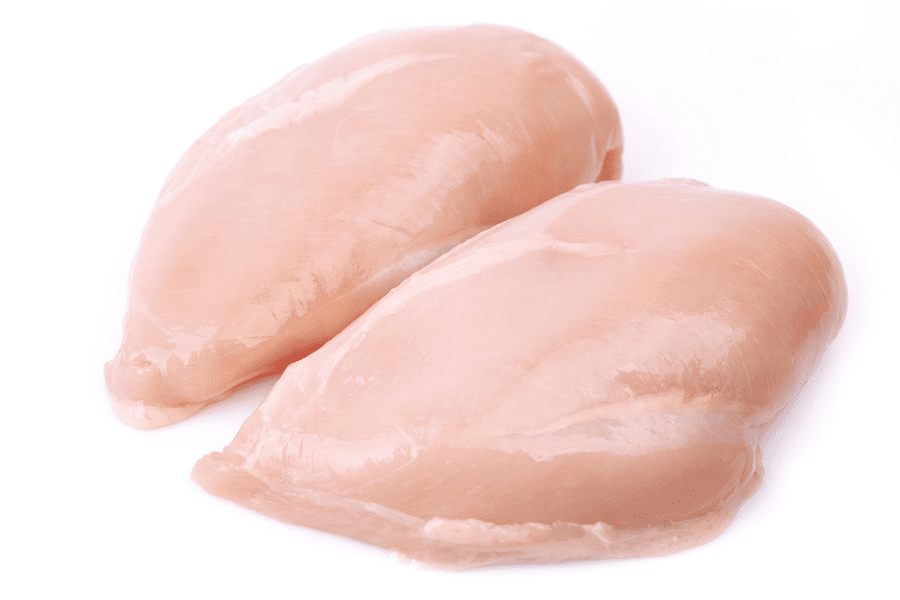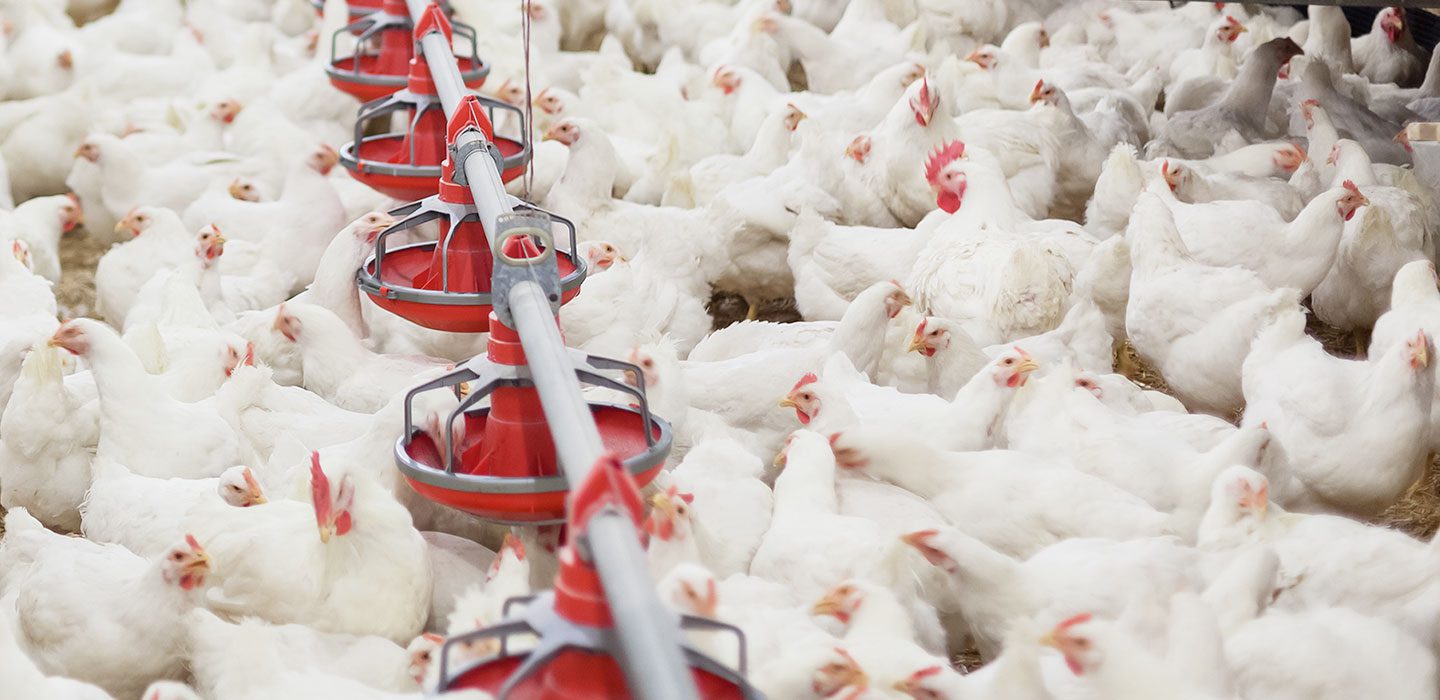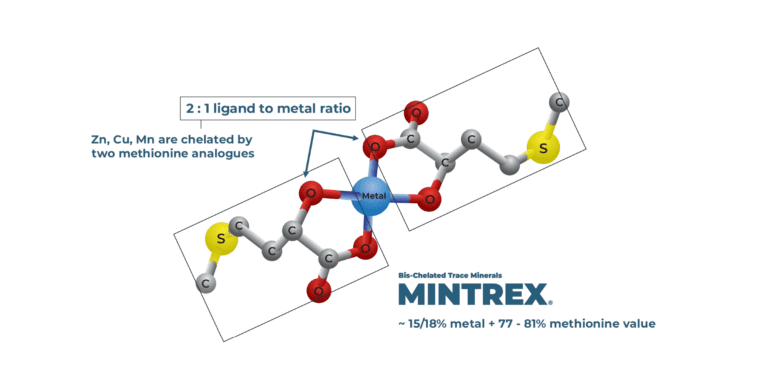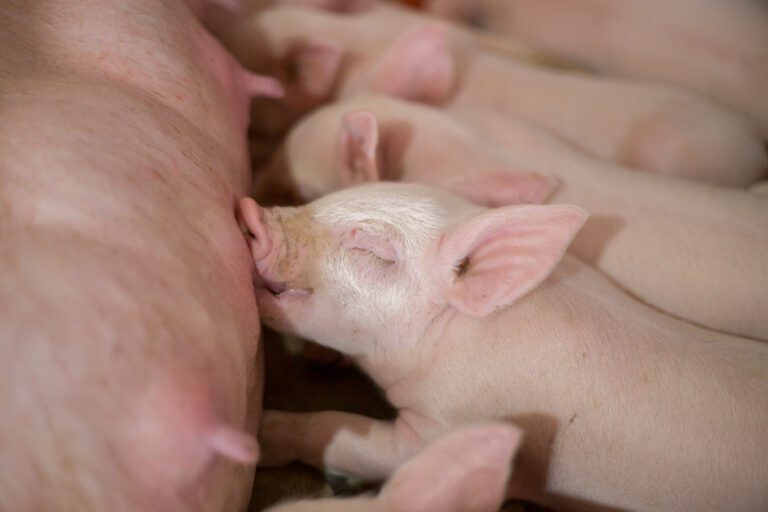Os minerais biquelatados podem ajudar com o peito amadeirado

O objetivo da produção de aves é entregar um frango de alta qualidade e peso adequado à planta de processamento. Se uma carcaça inteira ou partes de uma carcaça forem condenadas ou rebaixadas, isso representará uma dificuldade financeira para o produtor e o processador. A condenação ou o rebaixamento podem ser causados por uma variedade de problemas, desde problemas de saúde à campo até problemas de manejo ou mesmo problemas mecânicos na unidade de processamento.
Miopatias como o peito amadeirado tornaram-se mais comuns nos últimos anos, ganhando a atenção de produtores, processadores e consumidores que o identificam como um produto avícola de qualidade inferior. A rigidez que afeta a qualidade da carne do peito é a característica principal do peito amadeirado, levando a uma menor satisfação dos consumidores com o produto final. A carne de peito afetada por peito amadeirado geralmente não é condenada pelos inspetores de abatedouro do USDA (Departamento de Agricultura dos Estados Unidos), mas o pessoal do setor de garantia de qualidade normalmente rebaixa essa carne, usando-a para produtos cárneos de menor valor.
Estima-se que a indústria avícola dos EUA perca anualmente 200 milhões de dólares devido a condenações e rebaixamentos da carne de peito devido ao peito amadeirado¹.
As potenciais causas do peito amadeirado estão sendo pesquisadas globalmente. Os cientistas levantaram as hipóteses de que esta condição possa estar relacionada a:
- Mudanças genéticas nas linhagens
- Tamanho das aves
- Rápidas taxas de crescimento
- Estresse oxidativo
O estresse oxidativo é um desequilíbrio entre radicais livres e antioxidantes no corpo. Radicais livres são moléculas contendo oxigênio que podem reagir com outras moléculas e causar danos aos tecidos.
Pesquisando o peito amadeirado
Não existe uma solução consistente para prevenir o peito amadeirado, mas várias ações foram implementadas com sucesso para melhorar a qualidade da carne de peito no processamento.
Ensaios de pesquisa² foram conduzidos na NOVUS para investigar o impacto da alimentação com microminerais biquelatados na diminuição da severidade do peito amadeirado em frangos de corte. Os microminerais são conhecidos por promover a saúde estrutural das aves e os microminerais biquelatados, com sua elevada biodisponibilidade. Graças à estrutura definida e consistente que proporciona estabilidade mineral no trato digestivo, foi demonstrado que apoiam a qualidade da carne e dos ossos.
Os resultados de um ensaio³ mostraram que a inclusão de microminerais biquelatados nas rações dos frangos reduziu significativamente a incidência de peito amadeirado grave, com uma diminuição média de 44 % quando comparado com frangos alimentados com microminerais inorgânicos.
Para saber mais sobre peito amadeirado e como alimentar seus frangos com minerais biquelatados, entre em contato com seu nutricionista ou com um representante da NOVUS hoje mesmo.
1-3 V.A. Kuttappan, B.M. Hargis, C.M. Owens. White striping and woody breast myopathies in the modern poultry industry: a review, Poultry Science, Volume 95, Issue 11, 2016.

Nutrição Inteligente para o seu negócio
Mais ciência. Mais conhecimento. Mais inspiração. Mais maneiras de você alimentar o mundo.




